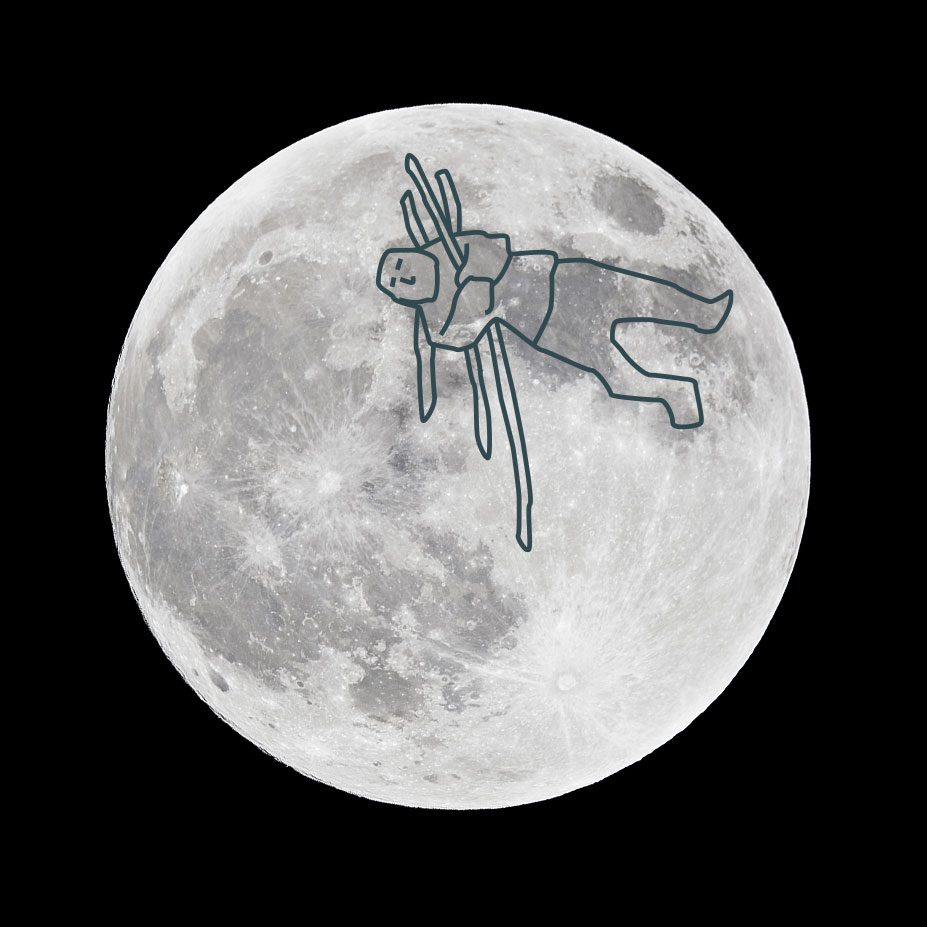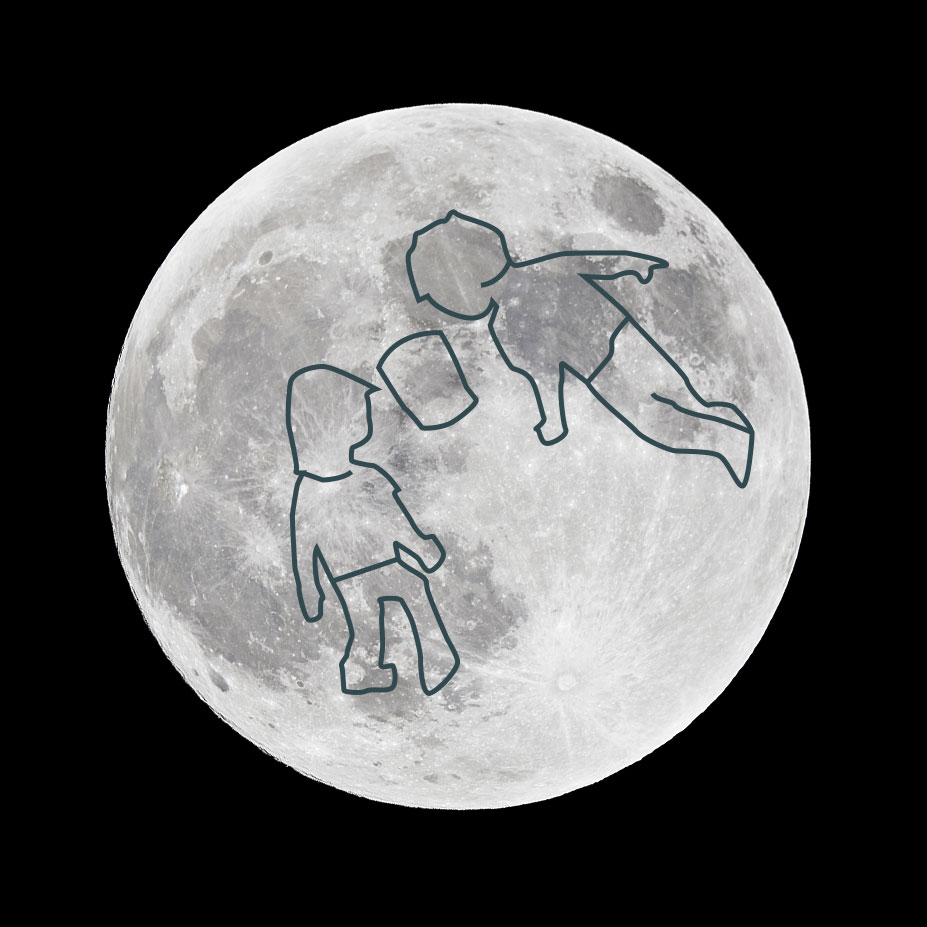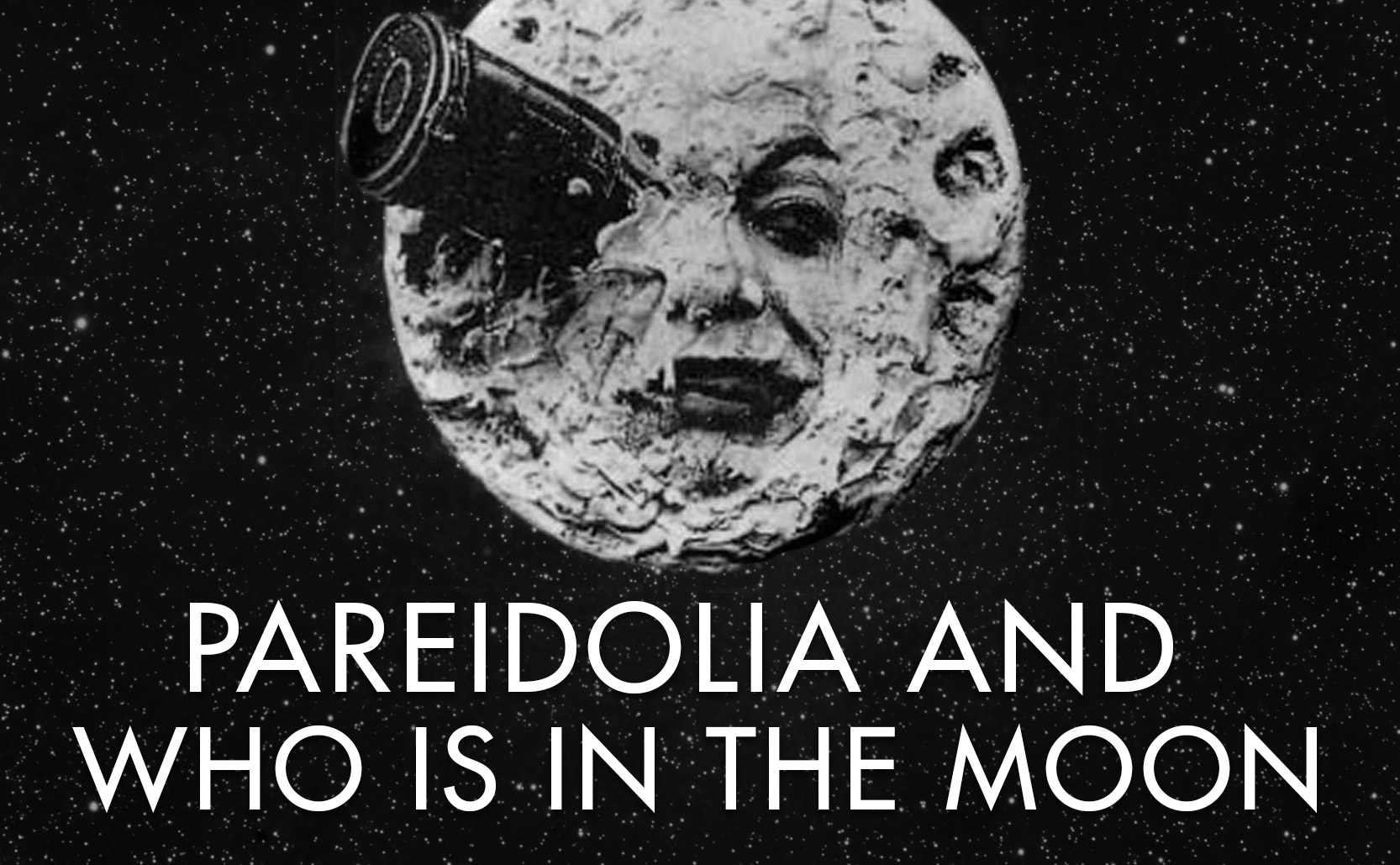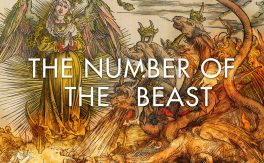A man’s face, a rabbit – different cultures see different things because humans are hardwired to look for patterns.
Over thousands of years of evolution our brains are hardwired to find patterns. For example, finding the pattern of tiger stripes in the tall grass is a pretty valuable skill to have. We use pattern recognition for defense, for finding information, for reading faces, etc. As our brains are constantly searching for patterns we’re bound to get it wrong sometimes and find meaning in things where there is none.
Pareidolia is when we incorrectly recognize something where there is really nothing. This can be auditory, such as “hearing” a word in what’s really just random sounds or white noise, but most of the time pareidolia is visual. We “see” animals in clouds, we “see” butterflies in Rorschach inkblot tests, etc. Facial pareidolia is when we see faces in things such as electrical outlets, the front of cars, burnt grilled cheese sandwiches, or even on the surface of the moon.
Who is on the Moon?
The surface of the moon is marked by impact craters from asteroids as well as large craters of solidified ancient lava. In the same way ancient humans connected the stars to create constellations, people have looked at these lunar markings and “seen” a variety of things.


The Man in the Moon
A European tradition going back to at least the 14th century finds the whole body of a man carrying sticks on the surface of the moon. While stories vary, he’s said to be a man caught gathering sticks on a Sunday. As punishment for breaking the Sabbath he was banished to the moon.
The Haida of the Pacific Northwest North America see this shape as a boy (instead of a man) who had been gathering firewood by moonlight. The boy insulted the moon and was similarly banished to the moon as punishment.
Other traditions see just the face of a man and not the whole body. Some say the man is Caine from the Bible, also sent to the moon as punishment. Talmudic folk tradition says this person is Jacob.

Jack & Jill
The nursery rhyme of Jack & Jill is based on the Scandinavian myth of Hjuki and Bila. The two children were said to be carrying a pail of water when the moon god Mani carried them to the moon (where they can be seen carrying their pail).

The Woman in the Moon
Sometimes the man/boy carrying sticks on the moon is said to be a woman (a witch of course) carrying sticks. In the southern hemisphere however, where the moon is seen upside down (depending on your cultural point of view), the Māori of New Zealand see a different shape as a woman. Rona was carrying water at night but tripped when there was insufficient moonlight to light her way. Hurt and angry she cursed the moon. The moon heard her insults and (like the punishment in the Haida legend) she’s now on the surface of the moon along with her water jug.
The Samoans say this woman is Sina, who thought the moon looked like a giant breadfruit and asked the moon to come down to let her child have a bite. The moon, insulted by this, took Sina, the tools she was working with, and her child back to the moon.

A Pair of Hands
In some Hindu traditions the hands of Astangi Mata are seen on the surface on the moon.

Name of Ali
In Islam, where there is a history of aniconism and not depicting sentient beings in art, there is a Shiʿite tradition of seeing the name of Ali (the son-in-law of Muhammad) written on the surface of the moon.

A Rabbit
In India the Buddhist Jātaka tales have a story of a rabbit that sacrifices itself by jumping into a fire. The rabbit is saved and placed on the surface of the moon. In China the rabbit Yutu is seen on the moon preparing the elixir of life in a bowl. The Japanese also see a rabbit with a bowl but instead of a magical elixir it’s preparing rice cakes.
Mesoamerican groups also see a rabbit on the moon. As the one story goes Techuciztecatl (the moon) was hit in the face with a rabbit, the imprint of which is still on the moon.

A Toad
The Selish people tell of a wolf who was romantically pursuing a toad in the moonlight. Just before being caught by the wolf the toad leaped so high she landed on the moon. Another toad on the moon is a variation of the Chinese rabbit on the moon story. In this version after the rabbit prepared the magical elixir for the Moon goddess Chang’e, the goddess drank the elixir and was transformed into a toad.
The Kimbundu tribe of Angola have the story of a prince who was only permitted to marry the daughter of the moon. Only a frog knew the way to get to the moon so he served as messenger between the Earth and the moon. Now the frog can be seen on the moon.
Thousands of years of humans have looked up at the moon from cultures around the world and have, through creativity and pareidolia, seen a variety of things. Cultures have explained these figures with creation myths or moral lessons, giving us the stories we know today.
Bonus: One of the most famous versions of the man in the moon is seen in the 1902 Georges Méliès film Le Voyage dans la Lune.





